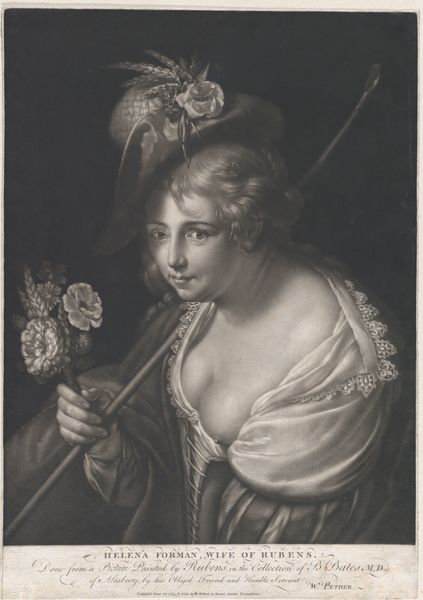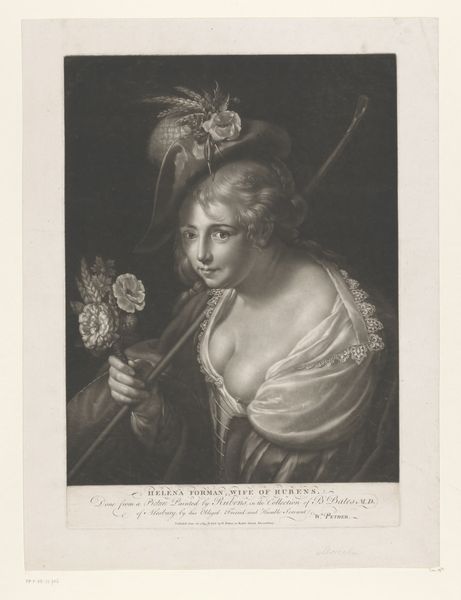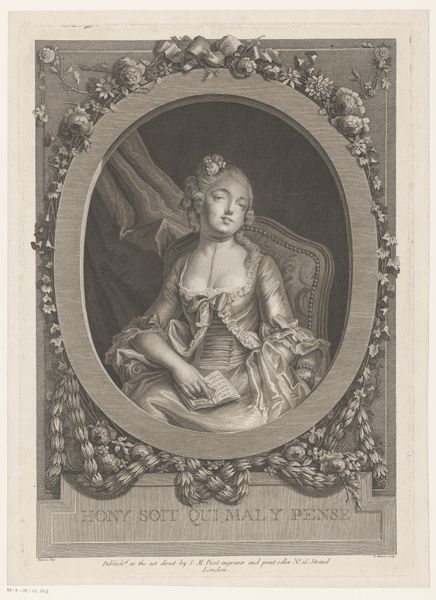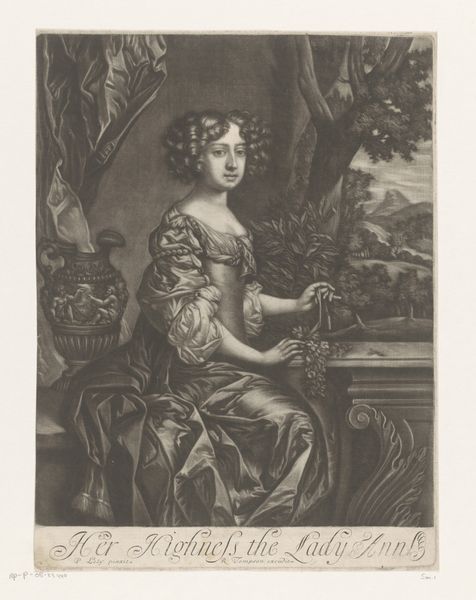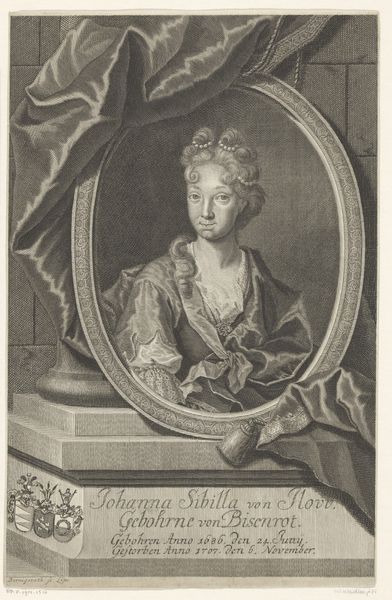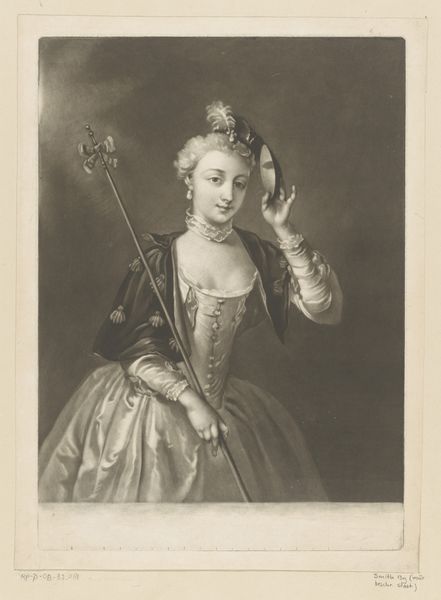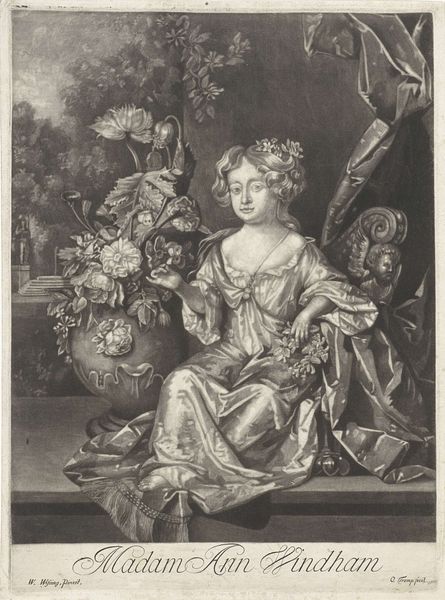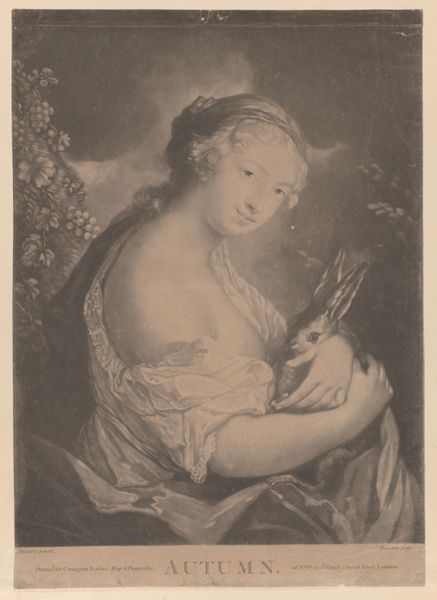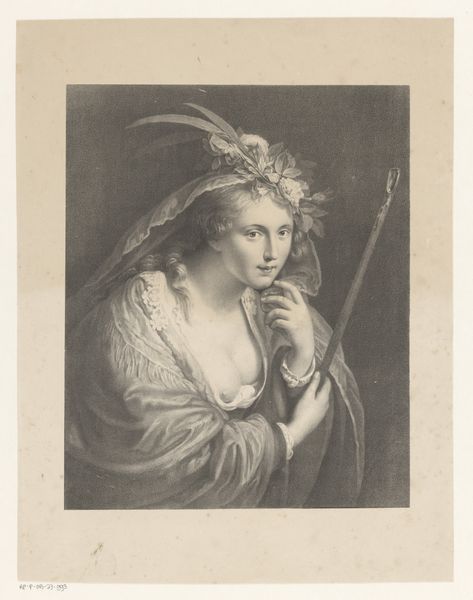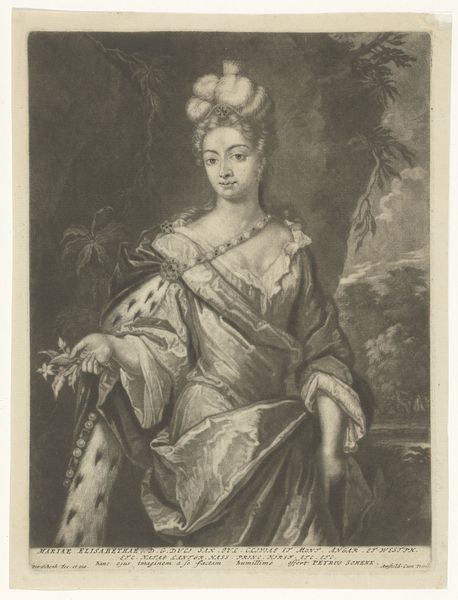
Dimensions: height 251 mm, width 176 mm
Copyright: Rijks Museum: Open Domain
William Pether created this mezzotint engraving of Helena Fourment in 1773 in London. We see Helena dressed as a shepherdess, complete with floral decorations and a suggestive décolletage. Pether’s print speaks to the popularity of pastoral imagery in 18th-century Britain. This was a period when artists and patrons looked back to earlier eras for inspiration, often idealizing rural life and aristocratic leisure. The print is a copy of a painting by Peter Paul Rubens, the famous Flemish Baroque painter. The inscription identifies Rubens as the ‘inventor’ of the image. Rubens painted Helena, his second wife, multiple times. Mezzotint was a popular printmaking technique in Britain at this time, known for its rich tonal range and velvety blacks. Publishers like Pether were vital to disseminating images and shaping public taste. Prints allowed for wider access to art, helping to establish artistic reputations. As art historians, we consult a variety of sources— from auction records to scholarly articles — to understand the social and institutional contexts of images like this. These enable us to understand the art market and the evolving status of artists, as well as the changing status of women.
Comments
No comments
Be the first to comment and join the conversation on the ultimate creative platform.
